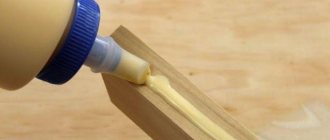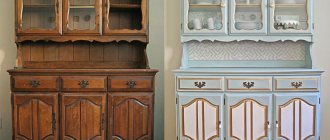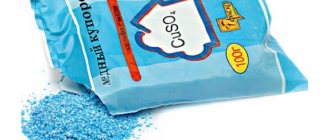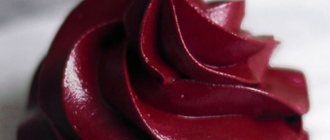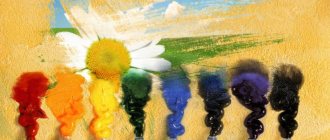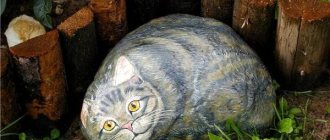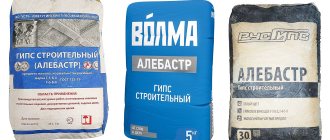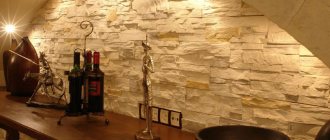What is casein
Casein is a protein derivative obtained by curdling fermented milk. In other words, when sour milk is curdled, this enzyme can be isolated from it. Caseinogen is used not only in the production of adhesives, but also paints, plastics, and medicines.
In appearance, this substance is a powdery material. There are four grades based on the degree of purification. In this case, quality can be determined externally by eye.
- Top grade. Purified casein is predominantly white in color. Ivory shade is allowed. The substance consists of granules of the same diameter (4–5 mm). The particles lag behind each other and are crumbly.
- First grade. Particles of a light, amber hue, also homogeneous, may partially stick to each other.
- Second grade. These granules are dark yellow and cloudy. May form sticky lumps of several particles.
- Third grade. Yellow-brown particles can be represented by a total mass of connected granules.
The lighter the shade, the purer the substance.
Industrial production of glue
Typically, glue is made from rennet casein in production. After preparing dairy and butter products, part of the raw material remains, into which rennet is introduced. Using another technology, glue is prepared by introducing acids, and then casein in its finished form will be called lactic acid.
Skim milk is treated with acid whey, causing casein grains to settle to the bottom. Next, it is washed several times to compact the grains. Moisture is removed by centrifugation or pressing. Afterwards, the casein is dried, crushed, and the composition is enriched with additional components to obtain glue.
Composition and properties
The composition of industrially produced glue, in addition to the main substance, includes: rosin, lime, solvents, sodium bicarbonate, dyes, starch.
This glue has the following characteristics:
- Currently, casein glue is water resistant.
- Externally, it is a viscous, opaque substance. After dilution, the solution remains viable for 3.5–5 hours with the lid closed.
- The smell is not strong and dissipates quickly.
- The dry powder dissolves in water with minimal sediment.
- After complete curing, it is difficult to wash off with water.
- It may crack due to temperature changes.
View this post on Instagram
Post from Shop “Stolyar” Blagoveshchensk (@stolyarblg) July 14, 2019 at 5:15 PDT
Purpose
Used for joining parts made of cardboard, leather, suede, fabric, wood, porcelain and plastic. It is the main solution for working on plywood, cardboard, and furniture production. Connects materials of different densities and textures together.
It is part of finishing materials (putties, putty mixtures, casein paints). At the same time, such a natural component ensures the stability of the compositions against alkalis.
The glue has found its application in the production of wooden children's toys because it contains eco-friendly components.
Scope of application
Casein is primarily used to make a variety of furniture and other wood products, hence the commonly used name "carpentry."
In addition to use in furniture production, it can be used when gluing frames:
- oak leather/leather;
- plastic;
- or gluing together various wooden parts.
Casein also has a beneficial effect on wood, improving its structure and environmental properties.
Among other areas of activity where this material is in demand, construction can be noted.
So, it is contained in:
- putty;
- putty;
- various enamels;
- often used in finishing works.
Casein is added to facade paints to make the color last longer, resulting in a longer coating life.
A variety of labels, for example, on dishes or glass products, are also glued using this material.
Among other things, casein can also bind
- Cardboard.
- Textile.
- Faience.
- Styrofoam.
- Expanded polystyrene.
- Plywood.
Casein in general is a fairly valuable material used in the chemical industry. So, plastic and ceramics are made from it, which also glues them together well.
Note: among other things, casein is also widely used in the field of painting, printing, in the production of various pigments, toys, and even in the food industry (inclusive of infant formula).
Advantages and disadvantages
The natural components of casein glue determine its characteristics. Positive characteristics include:
- Environmentally friendly. The solution, prepared from pure casein without impurities, does not contain components hazardous to health. Therefore, part of it is used for the manufacture of children's furniture and items for children.
- High adhesion to wood. This material holds different rocks together; its ability to penetrate the upper fibers makes the adhesion more reliable.
- In its dry form, casein practically does not react to temperature changes.
The main condition for proper storage is to protect the powder from moisture.
- Resistant to moisture after drying.
But the substance has its drawbacks:
- Since this material is natural, it is susceptible to mold, pest damage, and fungal growth. Therefore, glue is not recommended for wet rooms.
- After mixing from dry powder, such a solution has a pot life of 4–5 hours. Then it loses its properties. Therefore, you need to work with glue quickly enough.
- After drying, casein glue leaves dark marks on the surface.
Manufacturers
The raw materials for the production of the adhesive are provided by dairies. Now on sale you can find both powder for making casein glue with your own hands, and ready-made carpentry composition.
- Anles "12 stools". Gray powder for mixing glue at home. After drying, the seam is elastic and waterproof. When water is added, a homogeneous viscous mass is formed. The solution ripening time is 1–2 hours. 50 gr. powder costs 142 rubles.
- Titebond Original is a joinery compound for large volumes of work. Available in 20 kg packaging. Sets quickly and forms a light brown film. Once dry, you can sand and paint. A package costs from 6,500 rubles.
- Moisture-resistant Titebond Premium adhesive is a one-component solution suitable for outdoor use. Has increased resistance to moisture. Allows use with items in direct contact with food. Sets in 10 minutes. Costs from 1900 rubles. 3.5 liters.
Characteristic
PVA
The production of PVA glue begins with the selection of the following components:
- Gelatin – 5 g;
- flour – 100 g;
- water – 1 l;
- glycerin – 4 g;
- alcohol – 20 ml.
One day before making PVA, gelatin is filled with water. The swollen gelatin, flour and distilled water are mixed, boiled in a steam bath until a dense, uniform texture is formed. Then add glycerin and ethyl alcohol to the mixture, stir and bring again to a thick, uniform texture. Allow the resulting adhesive mixture to cool and use it for its intended purpose.
Making your own glue
Carpentry
Wood glue is optimally used for durable gluing of materials, mainly wood, such as cardboard, plywood. To make glue, you will need tiles, which must be crushed and the crushed small pieces soaked in cold water so that it completely covers them. The resulting mixture must be kept until a soft jelly mass forms. As a rule, conversion takes 10-12 hours. Then the mixture in the container must be placed in a steam bath and stirred continuously until it reaches a uniform liquid texture. Allow the resulting mixture to cool, then use it for its intended purpose. If thin glue is required, add a little hot water. To firmly bond a leather product, add 1 teaspoon of glycerin to 500 ml of the composition. This is such a difficult technology for making glue.
Tiled
It is best to glue façade and decorative tiles using tile adhesive. It is made from water, sand, cement and PVA. Since sand essentially acts as putty, it is recommended to take sand with a limiting diameter of 2 mm. The proportion of cement and sand is 1:3. For example, 1 bucket of cement requires 3 buckets of sand. To prepare the mixture, cement and sand are thoroughly mixed, and then a solution of water and PVA is added. For 1 bucket of tile adhesive you will need 500 g of PVA. The volume of PVA may increase when gluing tiles in places of high humidity. The resulting mixture is mixed until it acquires a uniform thick texture and is suitable for use. The glue must be used immediately, without waiting until it begins to harden. The hardened solution should not be diluted with water and used during the gluing process.
Casein
There are many similarities between wood glue and casein glue, but the latter is more resistant to moisture. Casein glue is made from casein powder, water, and borax. Water is added to the casein powder and then infused for about 3 hours. Hot water is also added to the borax in a ratio of 1:7. The resulting solution is mixed with casein, boiled in a steam bath and stirred continuously. After 40 minutes. After removal from the steam bath, the glue is ready for use.
You can make your own casein powder. Why is sour low-fat milk expressed through thick gauze? Casein from gauze is washed in water, boiled, squeezed and dried until hard.
To make a homemade casein mixture you will need borax, water and casein powder in a ratio of 1:4:10. When combining ingredients, water should be added gradually. It is advisable to use the finished composition immediately, since after about 3 hours it hardens and loses its stickiness.
Waterproof
Quite often, households need glue that is not afraid of dampness and is waterproof, for example, for a rubber boat. We offer several methods for producing adhesives:
- Low-fat cottage cheese and slaked lime are mixed until a thick, uniform mass is obtained. After which the glue is suitable for use. It is applied to surfaces that should be clamped and dried well;
- 100 g of high-quality wood glue is boiled over low heat until it acquires a liquid texture. Then 35 g of drying oil is added and the mixture is stirred well. Please note that it can only be consumed after preheating.
Making glue at home is a simple and affordable process! Of course, homemade glue is not used for gluing frames or repairing punctures in car wheels, but it is not replaceable in everyday life.
How to make at home
To make your own casein glue:
- If you have casein powder, dilute it in equal proportions with warm water and leave for 20-30 minutes. Then mix again and the glue is ready for use.
- If there is no dry mixture for preparation: 80 gr. cow's curd, add 20 ml. ammonia. Mix thoroughly and pass through a fine sieve.
- Pour sour milk (3 l) into a saucepan. Place on medium heat and wait for it to boil. Then drain into a colander lined with gauze. Transfer the resulting cottage cheese to a frying pan and add 3 tbsp soda. spoons. Stir until the solution turns yellow. Remove from heat, add water if mixture is too thick.
Curd processing
Grind the cottage cheese using a blender and rinse it several times. Use boiled water for this purpose. Drain the mixture into a colander lined with several layers of gauze. Let the liquid drain.
After this, the mass should be spread out on a tray, plate, or baking sheet in a thin layer and dried. This can be done in a slightly open oven at the lowest heat, in the sun, or in an electric oven. As a result, you will receive dry casein in small granules. They can be stored in this form for a very long time and glue can be prepared as needed.
The Russian Union of Travel Industry named the share of those planning domestic tourism
“In this decade”: the State Duma called the transition to a four-day week inevitable
The list of Russian software preinstalled on iPhone will expand
Some tips for working with composition
- To prevent mold from forming on the surface of the seam, cover it with varnish, or add a few drops of vinegar to casein glue.
- Store the dry mixture in a tightly closed container, keeping it away from liquid.
- The liquid composition is sensitive to temperature changes. Therefore, you need to work with it at temperatures from +15 to +27˚С.
- For better adhesion, the casein composition is applied to both surfaces. Then hold for 3–5 minutes.
- Flat parts are placed under a press for a day.
- Excess of such glue is immediately removed with a clean rag.
Wood gluing
Casein glue is suitable for all types of carpentry, but it is important to use it correctly. If the work is inept or careless, the alkalis that are included in its composition can change the color of wood of some species that contain a large amount of tannins (chestnut, oak, mahogany). When gluing an array, casein glue is applied to both surfaces.
Before pressing, a holding time is required: open - up to 6 minutes, closed - up to 20 minutes. Glue temperature - from +20 to +25 °C. Pressure - from 5 to 12 kg/cm2. Exposure under pressure is from 2 to 8 hours, exposure of parts is from 12 to 24 hours, depending on their size.
You can start testing homemade glue after the white mass has dissolved. The completion of the process is indicated by the homogeneity of the composition. Glue two small bars about 15 cm in length and leave them in the open air. Being exposed to rain and hot sun, the glue retains its properties for six months. It has hydraulic properties, but if left unprotected in water for a long time, the composition swells. Changes in humidity affecting the wood are compensated by the elasticity of the dried curd glue. The strength of the composition is simply amazing.
